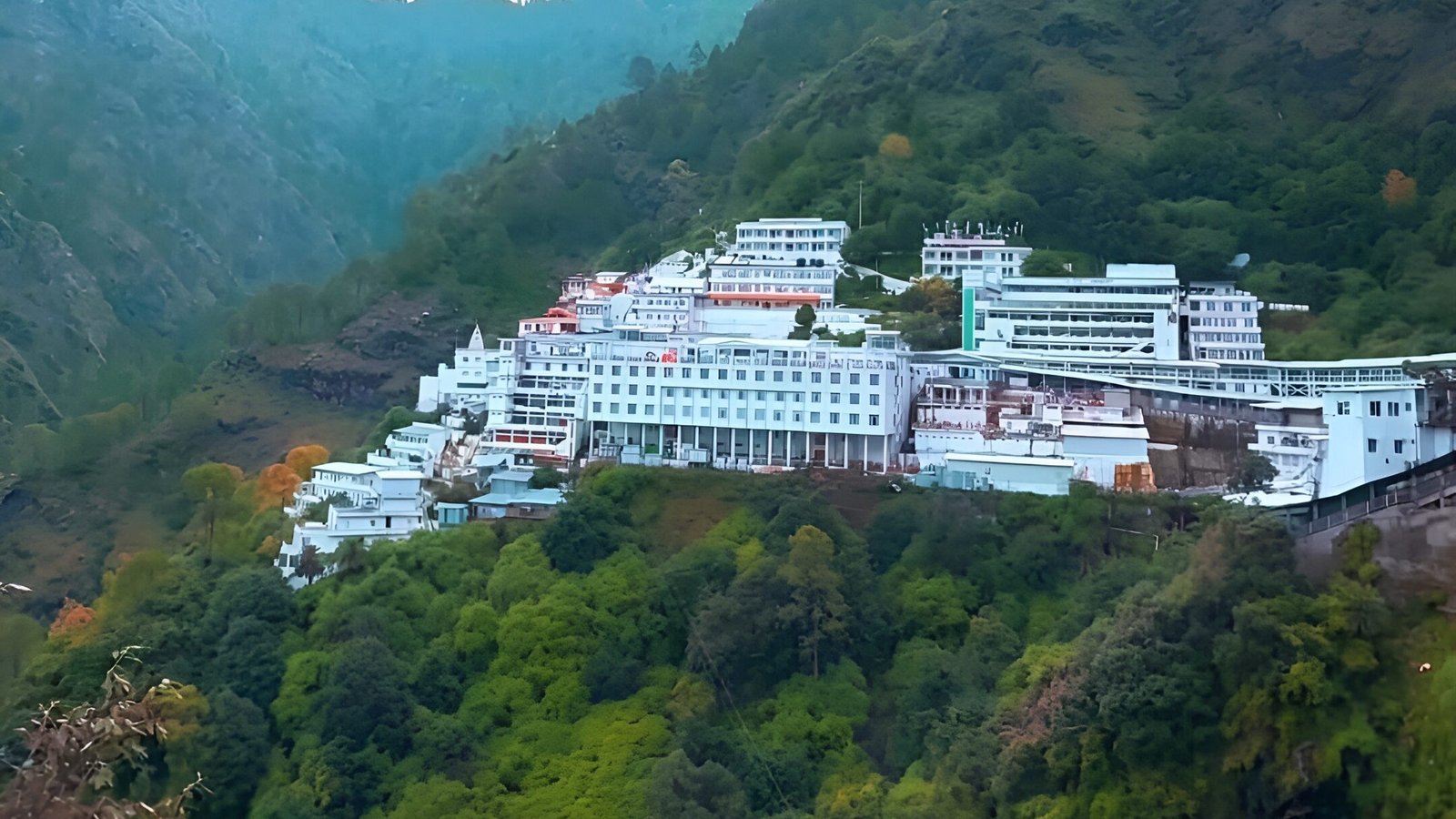Nestled in the Trikuta Mountains of Jammu & Kashmir, Vaishno Devi is a revered spiritual site that blends centuries-old mythology with vibrant modern traditions. Each year, millions embark on a soul-stirring yatra, seeking blessings and serenity at the sacred cave temple, a journey that shapes faith, economy, and culture alike.
Vaishno Devi, fondly called Mata Rani or Trikuta, is among the 108 Shakti Peethas and stands as a living testament to India’s living spiritual heritage. The shrine primarily honours Vaishno Devi, a manifestation of the Hindu goddess Durga. Located near Katra in the union territory of Jammu and Kashmir, the temple’s caves draw believers and explorers with promises of hope and divine intervention.
Historical Origins of Vaishno Devi
The legend of Vaishno Devi traces back to ancient Vedic times. It is believed that Vaishno Devi was born out of the combined spiritual energies of Maha Kali, Maha Lakshmi, and Maha Saraswati, destined to rid the world of adversity and evil. According to folklore, the goddess, pursued by Bhairavnath, took refuge in the cave at the Trikuta Hills, ultimately blessing the land and those who undertake the arduous yatra.
Archaeological evidence and sacred texts suggest the shrine has been a major pilgrimage spot for centuries, referenced in the Mahabharata and Puranic scriptures. Over the decades, local rulers and communities have nurtured this sacred site, and the Shri Mata Vaishno Devi Shrine Board, established in 1986, now oversees the administration of the pilgrimage.
Significance in Indian Culture
Vaishno Devi embodies the essence of Shakti worship in North India and beyond. The yatra is not just a journey of physical endurance but also a festival of faith marked by communal harmony, devotional music, and traditional rituals. Major festivals like Navratri draw enormous crowds, with the temple beautifully adorned in flowers and vibrant decorations, reflecting the spiritual fervour that grips Katra and the entire region.
The temple serves as a beacon for devotees from diverse religions and backgrounds. Its unique blend of religious inclusivity, ritual, and folklore makes the Vaishno Devi yatra a one-of-a-kind spiritual celebration.
Location and Geography
- Location: Katra town, Reasi district, Jammu & Kashmir, India
- Elevation: Approximately 5,300 feet above sea level
- Coordinates: 32.9910° N, 74.9497° E
Trikuta Mountain, home to the cave shrine, overlooks beautiful valleys and forests. This scenic location enhances the mystique and allure of the pilgrimage, providing breathtaking vistas along the entire journey.
The Yatra: Route, Experience, and Temples
Overview of the Pilgrimage
The classic yatra covers a 13-km ascent from Katra’s Ban Ganga checkpoint to the cave shrine. The journey is as spiritual as it is physical, inviting pilgrims to test their faith and resilience with each step.
Notable Stops & Temples
- Ban Ganga: Where pilgrims ritually wash before beginning the trek.
- Charan Paduka: A rocky outcrop displaying the goddess’s imprints.
- Ardh Kuwari: The halfway mark, featuring sacred caves and stories of the goddess’s meditation.
- Sanjhichhat: The main helipad and a vantage point for viewing.
- Bhaironath Temple: Devotees visit after paying respects to Vaishno Devi, believed to complete the pilgrimage.
Modes of Travel
- Walking/hiking the entire 13-km stretch is common and considered the most traditional path.
- Ponies and palkis (palanquins) offer assistance for elderly pilgrims.
- Helicopter service is available from Katra to Sanjhichhat, especially for those seeking a comfortable journey.
- Ropeway and battery-operated vehicles now help pilgrims cover steeper segments, ensuring inclusivity for all ages.
Notable Landmarks
- Scenic viewpoints, the sound of devotional chanting echoing through mountain valleys, and refreshment stalls keep the spirit of the yatra high at every turn.
Special Events and Recent Updates
The pilgrimage remains open throughout the year, with peaks during Navratri and other Hindu festivals. In 2025, the yatra saw some significant developments:
- Navratri Footfall: Over 1.70 lakh pilgrims visited during Navratri in September 2025, evidence of the shrine’s lasting popularity.
- Weather Disruptions: The yatra was temporarily suspended several times in 2025 due to landslides and inclement weather, with special advisory protocols issued to protect the safety of devotees.
- Landslide Incident: A tragic landslide on August 26, 2025, claimed 34 lives and prompted stricter safety and tracking measures by the Shrine Board.
The temple administration responded swiftly, introducing RFID tracking, enhancing rescue operations, and issuing timely weather advisories.
Tourism and Economic Impact
Vaishno Devi is a critical economic engine for Jammu & Kashmir. The steady influx of pilgrims not only supports local businesses and hotel industries but also generates vital revenue streams for the state.
Key Figures and Data
| Year | Pilgrims (lakh) | Notes |
|---|---|---|
| 2022 | 90+ | Marked surge post-pandemic |
| 2023 | 95+ | Record-breaking footfall |
| 2024 | 94.83 | Second-highest in a decade |
| 2025 | Ongoing | 12,000-13,000 daily in peak |
- Tourism-related infrastructure, like the Vande Bharat train and new expressways, has further boosted visitor numbers.
- The Jammu Mail train generated a record revenue of Rs 26.36 crore in the first half of 2025, a testament to the economic ripple effect of travel to Vaishno Devi.
- Employment, retail, hospitality, and transportation sectors thrive due to steady pilgrim volumes.
Facilities and Modernisation
To meet the growing needs of visitors, extensive upgrades to facilities are ongoing:
- The New Vaishnavi Bhawan is expected to offer family rooms and improved waiting areas by 2025.
- Queue complexes and improved exit tracks ensure a smooth flow of crowds.
- RFID and surveillance systems enhance safety and efficient management.
- Special arrangements are made during weather disruptions, festivals, and eclipses to help maintain traditional rituals while prioritising safety.

Surrounding Culture and Attractions
Katra, the base town, thrives year-round with devotional shops, regional eateries, and cultural festivities. Pilgrims often explore nearby attractions, blending religious tourism with regional sightseeing. Notable sites:
- Nau Devi Temple circuit around Jammu
- Shiv Khori cave temple
- Patni Top hill station
- Local bazaars selling prasad, souvenirs, and dry fruits
Spiritual Experience and Lasting Impact
The Vaishno Devi yatra is far more than a travel itinerary; it is a synchronous journey of body, mind, and spirit. Each ritual, each step, and each sunrise on the mountain forges a link between ancient myth and today’s faith. With roots reaching deep into tradition and arms extended to welcome the modern pilgrim, Vaishno Devi’s enduring influence is woven into the personal stories of millions.
FAQs About Vaishno Devi
When is the best time to visit Vaishno Devi?
The shrine is open year-round, but Navratri brings the highest energy, accompanied by elaborate festivities. The winter months (December-February) can be cold and snowy, making weather and crowd factors crucial for planning.
How can pilgrims reach Vaishno Devi?
Rail (Katra station), road, and air (Jammu Airport, followed by road/rail to Katra) connect visitors. Helicopter and battery car services are available for efficient access to the shrine.
Is registration necessary, and how is crowd management handled?
Registration is mandatory. Management utilises RFID tracking, orderly queues, and security checks to ensure safety. Yatra can be paused during adverse weather conditions or emergencies, as seen during the 2025 weather events.
What accommodations and amenities exist for visitors?
Katra and along the yatra route offer hotels, dharamshalas (guest houses), medical clinics, rest areas, and food stalls. The Shrine Board operates and regulates many of these services for affordable and safe pilgrim experiences.
What is the significance of visiting the Bhaironath Temple after the Vaishno Devi darshan?
Tradition holds that a pilgrimage is incomplete without seeking blessings at the Bhaironath Temple, located 2 km uphill from the main shrine, thereby completing the spiritual journey.
What steps has the Shrine Board taken after the 2025 landslide tragedy?
Enhanced weather monitoring, instant alerts, more rescue teams, and stricter safety protocols now help safeguard pilgrims. Some festivals or events may have altered timings or temporary suspensions due to safety reasons.
Can senior citizens and people with disabilities visit comfortably?
Yes. Helicopter, battery car, ropeway, and pony services support accessibility. There are also medical aid posts and resting points along the route.
